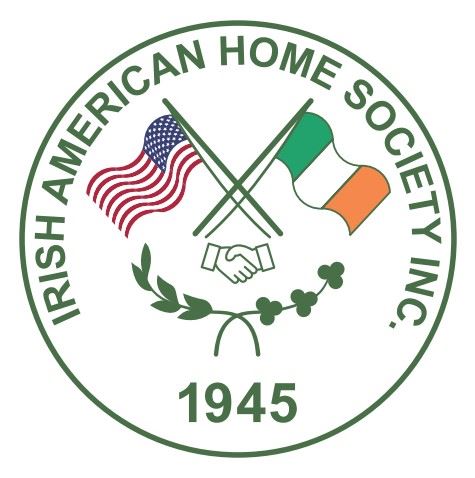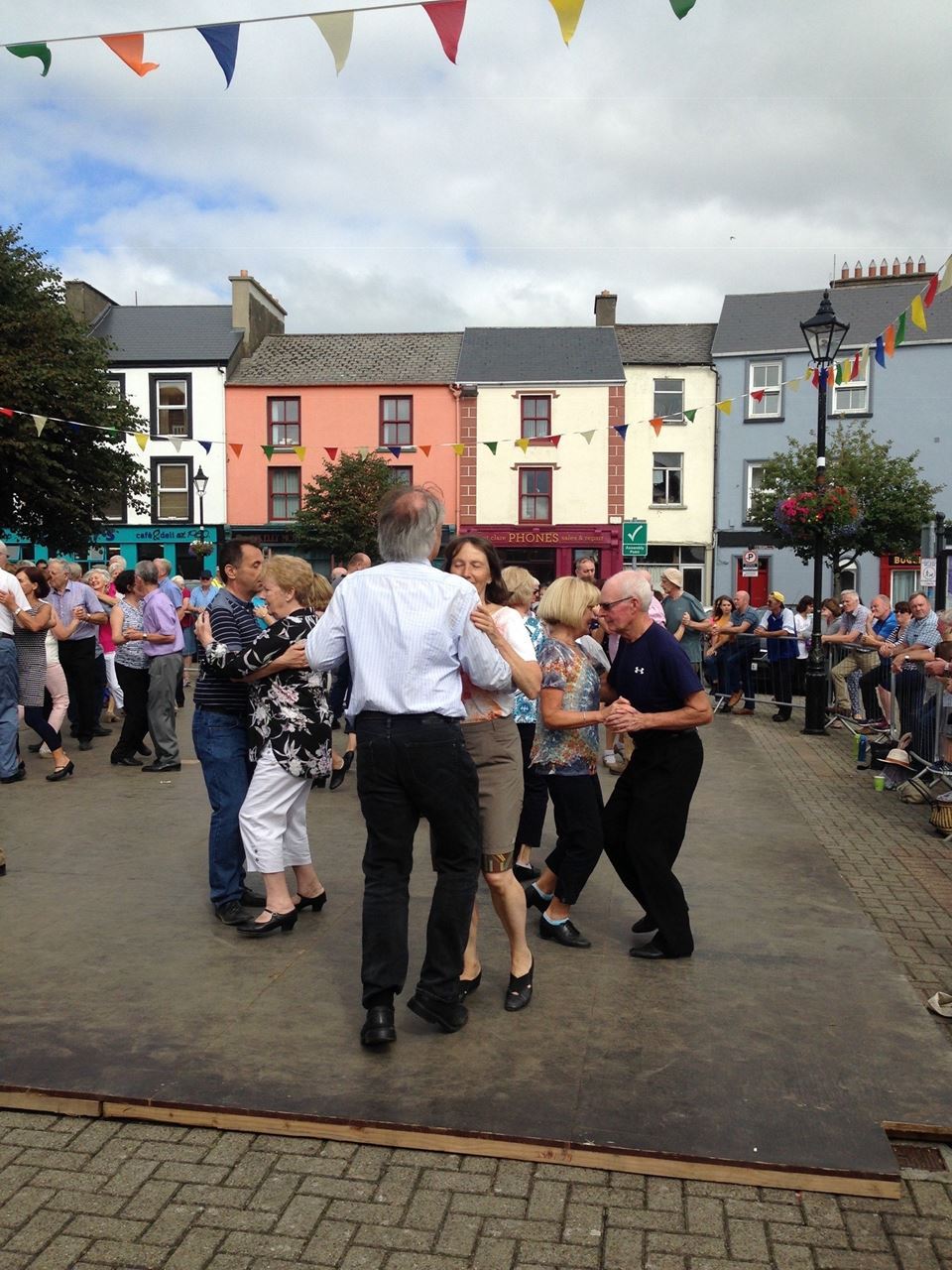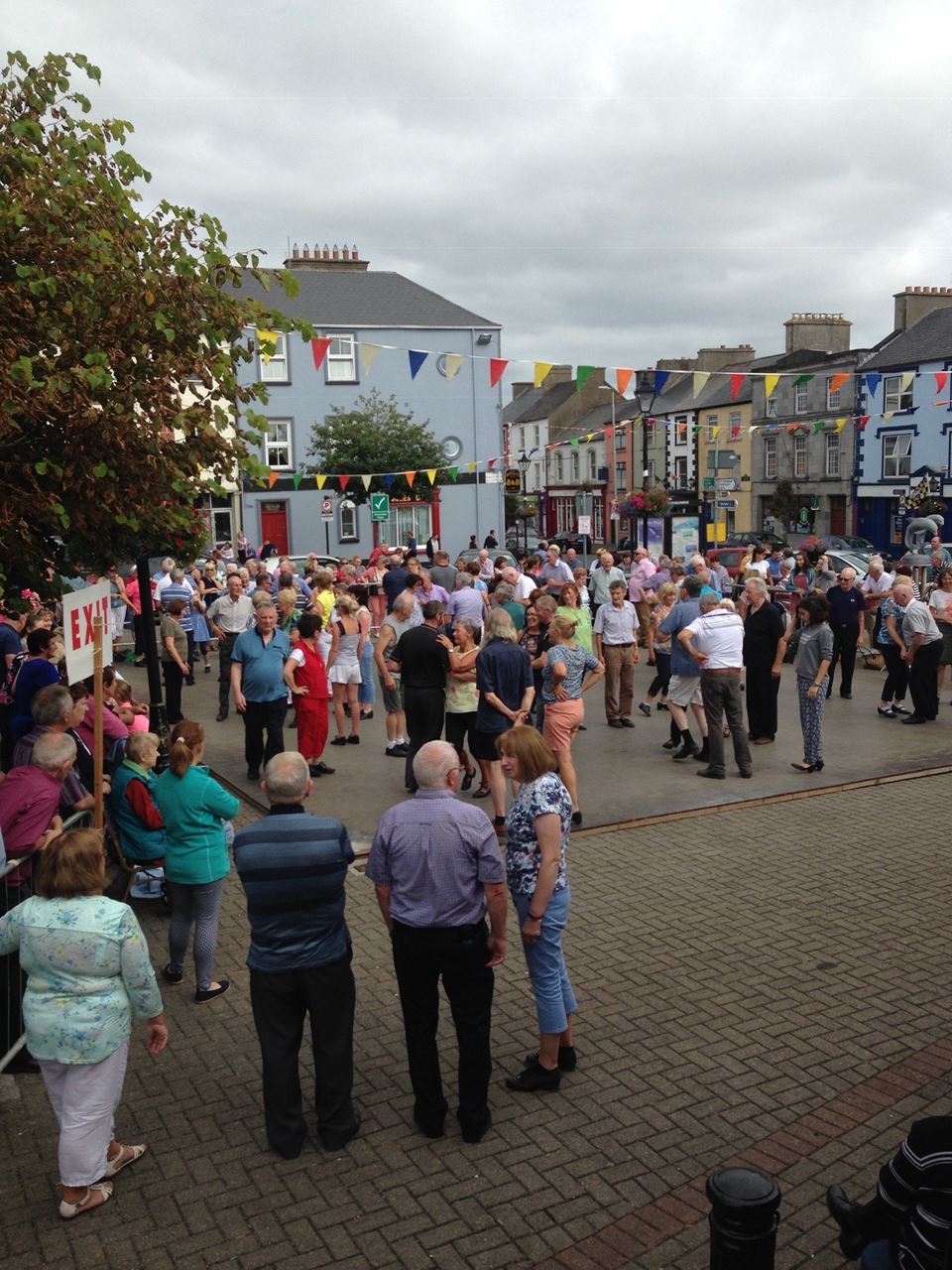Irish Set Dancing
IRISH SET DANCE, SOMETIMES CALLED "COUNTRY SETS", IS A POPULAR FORM OF FOLK DANCING IN IRELAND AND THE UNITED STATES.
The Irish American Home Society, 220 Commerce Street, Glastonbury, Connecticut, holds weekly Set Dancing Lessons in the upstairs hall in Wednesday evenings (with exception of 4th Wednesday each month) from 7:00-9:00 p.m.

Please consider joining us!! We’d love to have you
partner not necessary (singles are available to dance with)
soft sole shoes slide easily on our beautiful Maple hardwood floor
|
|
History
Set dances are based on quadrilles, which were court dances. These were transformed by the Irish into a unique folk dance of the Irish rural communities.
The Set
To start, four couples are arranged in the form of a square to dance with each couple being in the middle of the sides of the square. Both the eight dancers in the group and the dance itself are called a "set". The dance is a sequence of several dance figures, which usually have a common theme or structure. The figures usually begin and end with repeated parts that everyone dances, and then during the figure each couple or pair of couples will dance separately. In the set, the couple with their backs to the band are traditionally named "First Tops" with "Second Tops" facing them. The couple on First Tops left hand side is called "First Sides" with "Second Sides" facing. Usually the First Tops are the first to dance, with some sets having First Sides and then Second Tops going next and some having Second Tops and then the First Sides. Second Sides is almost always the last couple to dance, and is therefore a good place for beginners to start, as they get more time to watch the demonstrations of the figure that the other couples give.
Set dances from a particular region usually have similar elements. For instance, sets from the Connemara region (such as the Connemara Reel Set, the South Galway Reel Set and the Claddagh Set) have the First Sides on the right of the First Tops, and sets from the Clare region often involve footwork similar to Irish competitive Stepdance or traditional freeform Sean-nós dance (which emphasizes a "battering" step).
Distinctive set dances and dance regions emerged in the beginning of the 19th century[2] and evolved as popular house dances separate from the more formal Irish step-dancing tradition. In some homesteads a kitchen pot was placed under the flag stones as an extra acoustical element for the house dance.[3]
Set dance differs from square dance and round dance in that it does not require a caller: the sequence of figures is predefined by the name of the set. In places with a large community of set dancers, like Ireland or New York City, it is usual for dances to be uncalled - that is, done with no calling - because most dancers already know the instructions for the common sets. However, at venues with larger numbers of occasional dancers, a caller is often present to give instructions as the dance progresses, for those people who are not yet familiar with the set.
Related:
• The South Galway Set
• The Clare Lancers Set
• Irish dance
• Irish stepdance
• Sean-nós dance
• Sean-nós dance in America
• Slide (tune type)
• Polka
References:
1 ^ Kavanagh, Donncha; Kuhling, Carmen; Keohane, Kieran (September 2008). "Dance-work: Images of Organization in Irish Dance". Organization. 15 (5): 725–742. doi:10.1177/1350508408093650.
2 ^ Dancing in Ireland by Breandán Breathnach (Dal gCais Publications in association with the Folklore and Folk Music Society of Clare 1983)
3 ^ Saving the Set Dance by Paddy Corry, Treoir magazine, 1970
General
• Toss the Feathers - Irish Set Dancing Pat Murphy, Mercier Press ISBN 1-85635-115-7
• The Flowing Tide: More Irish Set Dancing Pat Murphy, Mercier Press ISBN 1-85635-308-7
• Apples in Winter - Irish Set & Social Dancing Pat Murphy, available at: pmurphysetdance@eircom.net
• A Handbook of Irish Dances, 5. Edition, J. G. O' Keeffe, Art O' Brien, Gill & Son Ltd., (1934)[1]
• The Story of Irish Dancing Helen Brennan, Mount Eagle Publications Ltd., 1999 ISBN 0-86322-244-7


